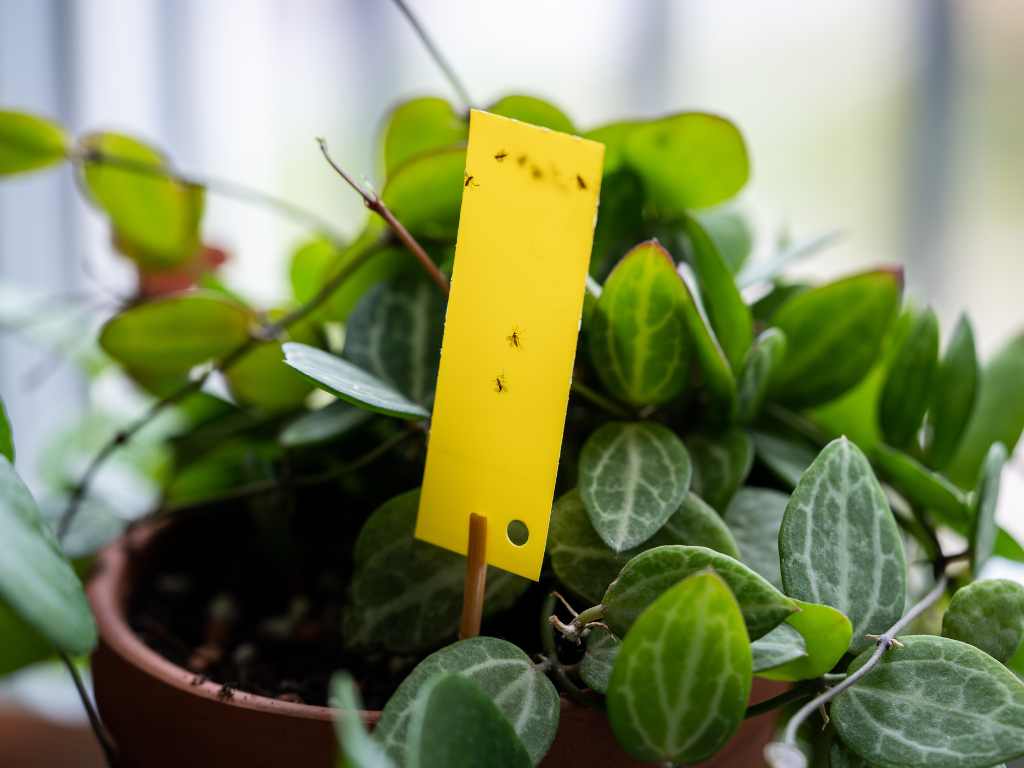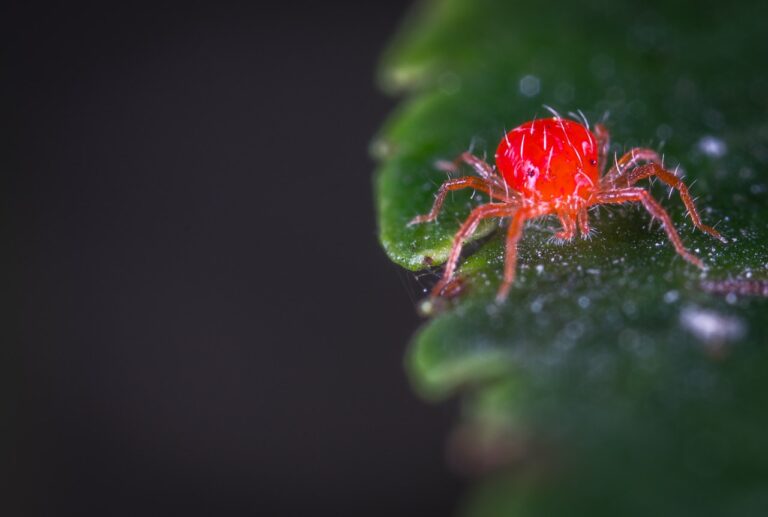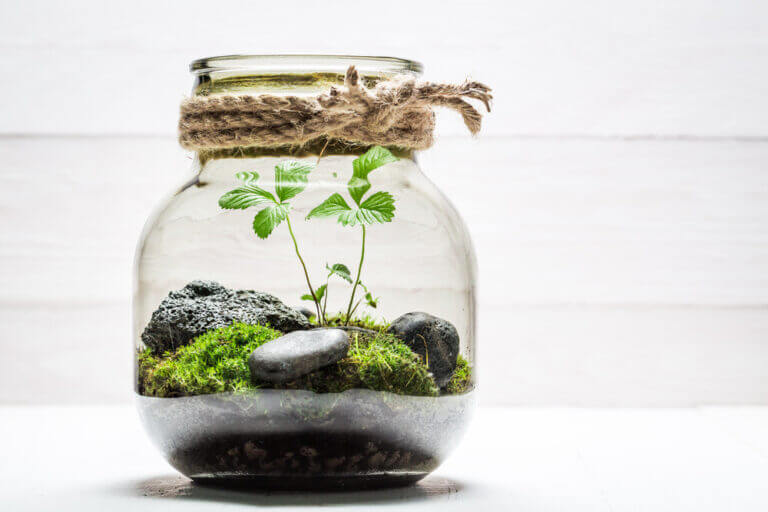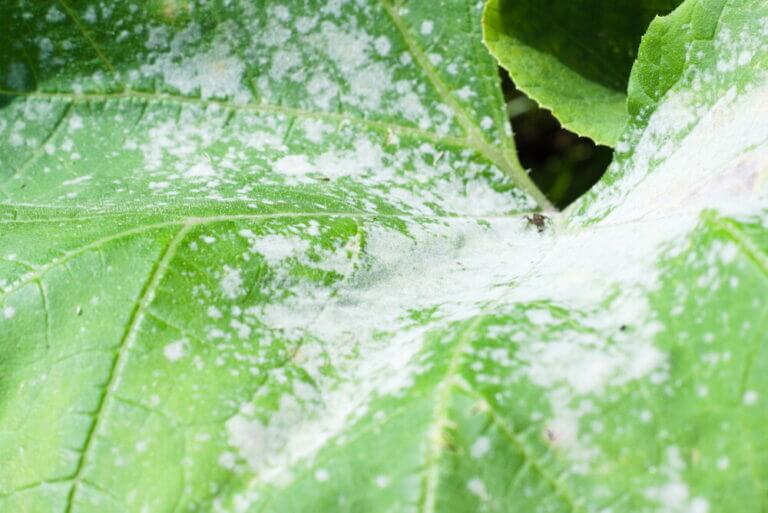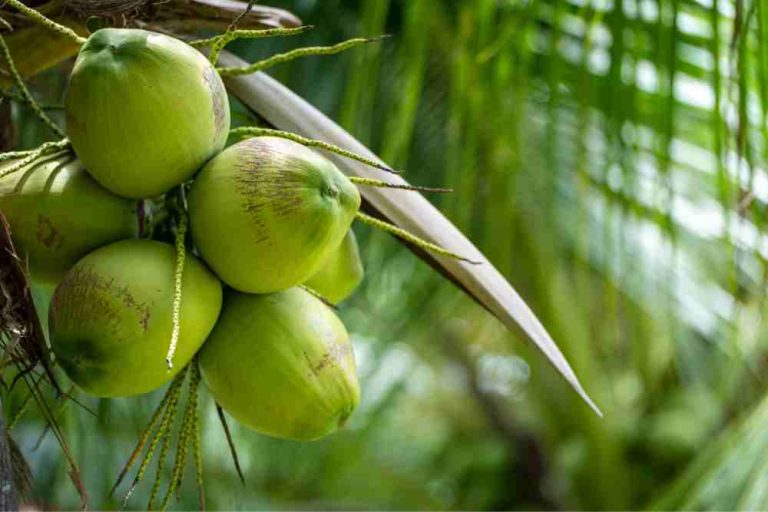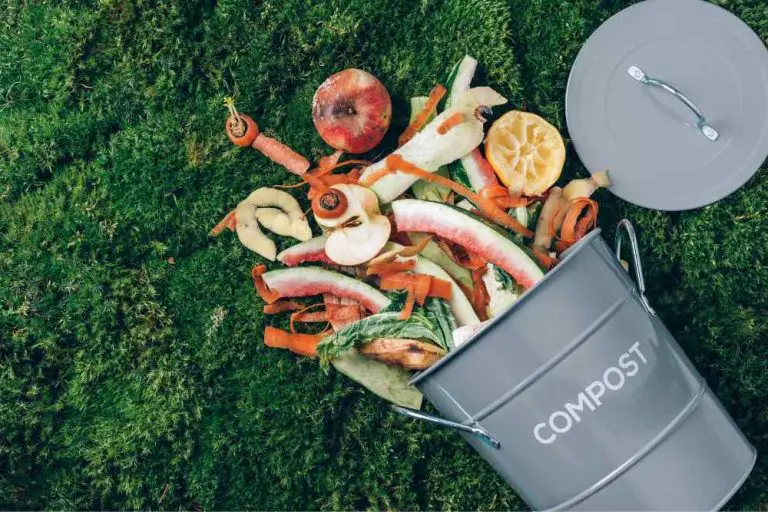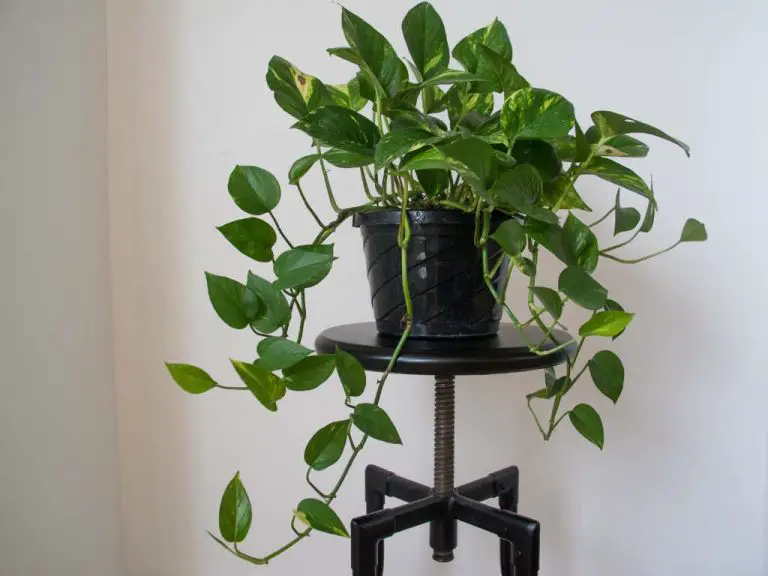How Do I Get Rid of Gnats in My Potted Plants? Find Out Here!
Gnats, specifically fungus gnats, can be a nuisance in potted plants. These tiny flying insects are attracted to the damp soil of houseplants and lay their eggs there. The larvae feed on organic matter in the soil, potentially causing damage to the plant.
Overwatering is a common cause of gnat infestations, so allowing the soil to dry out between waterings can help discourage them. There are several natural remedies for getting rid of gnats in plants, including using hydrogen peroxide, vinegar, cinnamon, and sticky traps. These methods can help eliminate gnats without harming your plants.

Key Takeaways:
- Overwatering is a common cause of gnat infestations in potted plants.
- Allowing the soil to dry out between waterings can help discourage gnats.
- Natural remedies such as hydrogen peroxide, vinegar, cinnamon, and sticky traps can eliminate gnats without harming plants.
- Fungus gnats are small flies that lay their eggs in damp soil and feed on organic matter in the soil.
- Preventing gnat infestations in your potted plants is key to avoiding the hassle of dealing with them.
Identifying Fungus Gnats
Fungus gnats, also known as Bradysia or Orfelia species, are small flies that can become a nuisance in your houseplants. These tiny insects resemble miniature mosquitoes and are characterized by their narrow legs, light gray or clear wings, and segmented antennae that are bigger than their heads. While adult fungus gnats don’t cause significant damage to plants, their larvae can feed on the roots, impeding nutrient absorption and affecting the overall growth of the plant.
Fungus gnats are commonly found in nurseries and can also infest indoor plants. To prevent an infestation, it’s crucial to avoid overwatering your potted plants and ensure that they have good drainage.
Overwatered soil provides the ideal breeding ground for these gnats, as they are attracted to dampness. By allowing the soil to dry out between waterings and using pots with proper drainage holes, you can reduce the risk of a gnat infestation.
Signs of Indoor Plant Gnat Infestation
- Small flying insects around your houseplants
- Tiny black or white larvae in the soil
- Yellowing or wilting leaves
- Stunted plant growth
If you notice any of these signs, it’s essential to take immediate action to eliminate the gnats and prevent further damage to your plants.
Natural Remedies for Getting Rid of Gnats in Plants
Gnats can be a pesky problem for potted plants, but fortunately, there are several natural remedies that can help you eliminate them. These methods are effective in killing gnats without harming your plants, and they are easy to implement. Here are some natural remedies you can try to get rid of gnats in your indoor plants:
1. Hydrogen Peroxide and Water Solution
Mixing hydrogen peroxide with water can be an effective way to kill gnat larvae in the soil. Simply dilute one part hydrogen peroxide with four parts water and pour it into the soil. The hydrogen peroxide will kill the larvae, and you can repeat this treatment every three to four days until the gnats are gone.
2. Apple Cider Vinegar and Dish Soap Trap
Create a simple trap by mixing apple cider vinegar with a few drops of dish soap. Place the mixture in a container, such as a small bowl or cup, and cover it with plastic wrap. Poke a few small holes in the plastic wrap to allow the gnats to enter. The gnats will be attracted to the vinegar, but the dish soap will prevent them from escaping, resulting in their demise.
3. Cinnamon and Chamomile Tea
Cinnamon and chamomile tea are natural fungicides that can help repel gnats by eliminating their food source. Make a strong brew of either cinnamon or chamomile tea and let it cool. Then, pour the tea directly onto the soil of your plants. The strong scent will deter the gnats and prevent them from laying eggs in the soil.
Preventing and Controlling Gnat Infestations
When it comes to keeping your potted plants free from pesky gnats, prevention is key. By following a few simple steps, you can effectively control gnat infestations and maintain healthy plants.
- Avoid overwatering: Gnats are attracted to moisture, so be sure not to overwater your plants. Allow the soil to dry out between waterings, as this will discourage gnat activity and prevent their eggs from hatching.
- Choose well-draining pots: Choose with good drainage to prevent the buildup of excessive moisture in the soil. This will create an inhospitable environment for gnats and help keep them at bay.
- Quarantine and inspect new plants: Before introducing new plants to your collection, isolate them for a period of time and thoroughly inspect them for any signs of gnat activity. This will help prevent the spread of infestations to your existing plants.
FAQ
How do I get rid of gnats in my potted plants?
There are several natural remedies you can try. Some options include using hydrogen peroxide mixed with water, vinegar mixed with dish soap, cinnamon, chamomile tea, pieces of raw potato, and yellow sticky traps. These methods can help eliminate gnats without harming your plants.
How can I identify and understand fungus gnats?
Fungus gnats are small flies that resemble tiny mosquitoes. They have narrow legs, light gray or clear wings, and segmented antennae larger than their heads. While the adult gnats do not cause much damage to plants, the larvae feed on the plant’s roots, hindering its ability to absorb nutrients and affecting growth. Fungus gnats are primarily a problem in nurseries and can also infest common houseplants.
What are some natural remedies for getting rid of gnats in plants?
Some natural remedies for getting rid of gnats in potted plants include using hydrogen peroxide mixed with water, vinegar mixed with dish soap, cinnamon, chamomile tea, pieces of raw potato, and yellow sticky traps. These methods can help eliminate gnats without the use of harsh chemicals.
How can I prevent and control gnat infestations in my potted plants?
To prevent gnat infestations, avoid overwatering and allow the soil to dry out between waterings. Using well-draining pots can also help prevent moisture buildup in the soil. When bringing new plants into your home, quarantine them and check for signs of gnat activity before introducing them to your other plants. Regularly inspecting your plants for signs of gnats and using preventive measures can help keep your plants free from infestations.
- 15 Ingenious Kitchen Garden Ideas to Cultivate Freshness Right at Home - April 7, 2024
- 10 Top Picks Best Plants for Open Terrarium - April 2, 2024
- 21 Easy and Cheap Walkway Ideas for a Charming Garden - March 31, 2024

